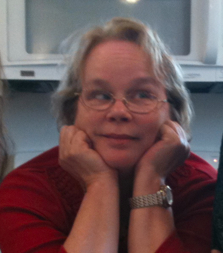August 2017 Featured Educator: Monica Cortada

Where do you teach? What ages/grade(s)? How long have you been a teacher and how long have you been at your current school or program?
I have been teaching ESOL for 24 years and have taught every grade level K-12. I have been at Deep Run Elementary School for 19 years.
What is your class, school and district like?
I work in Howard County Maryland, a wealthy suburban district about a half hour drive from both Washington, D.C. and Baltimore. Because it has the third highest median household income level in the U.S., we are afforded many wonderful resources in our schools. We have a computer-to-student ratio of 1:2 and many student support services.
Nestled in this affluence is Deep Run Elementary School where about 20% of our students are language learners and 50% of them qualify for free or reduced-price lunch, so we are a Title 1 school. Many of the non-ELL students at the school live in single family homes, townhouses, and apartments. A lot of the families I work with have multiple families living in townhouses, apartments, and mobile homes. Most importantly, our families feel safe in this community and are willing to be inconvenienced by the high cost of housing in order to feel safe. Most of our language learners are Hispanic, but we have some South Asian students and a small community of Burmese refugees.
What do language support services look like in your context?
The language support services we provide are student driven and very flexible. My team and I are the ESOL yoga masters, in that we adapt to what will best support our students. This may mean that I am doing pull-out, push-in, co-teaching, co-planning, or sometimes I am the primary teacher of a content area; all in the same week.
We make the support decisions in collaboration with the general educators and often a reading or math specialist. As a group, we decide what the particular support should look like for an individual student or in a certain class with language learners. We also collaborate when making placement decisions. For example, for a student who arrives from another country and maybe only speaks Spanish, we may choose to put him in a class with other Spanish speakers, a bilingual assistant, or a class that has good peer mentors where essential supports are embedded in his class. However, if we get a new student for whom we don?t have other students who speak his language, I may have to do more pull out initially to help that student develop the vocabulary and language he will need to survive in the classroom. We let the student needs determine what our scaffolds look like. Our administrators support us in making these decisions. They respect our experience and knowledge.
What do you love about your job?
Many things...
- The students: I love it when the learning clicks and a student "gets it" and is suddenly reading and comprehending in a language they barely spoke at the beginning of the year. Or, when an ELL student who struggled with basic computation starts to explain, in English, how to decompose a number in order to make it easier to manipulate. These are the moments that make my heart sing and sometimes I just cry for joy.
- The parents: I'm able to form bonds with the parents of my students in Spanish. Many of my parents have minimal educations and computer skills and don't have the time or opportunity to get up to speed with our district's digital home/school communication tools. Their preferred method is a cell phone and texting. So, I have a cell phone I use to text and phone parents. The cost of the extra phone line is not a large expense. I've also never had a parent pester me with too much communication. They are too busy working. We offer computer literacy parties for families run by a technology teacher, where we help parents learn how to use a computer. We have helped them use Google to find the newspaper from their hometowns or zoom in on Google Earth. At times this has been very emotional for parents. Learning these skills helps them reconnect with where they are from and learn how to navigate our increasingly digital-centric world.
- My colleagues: I've been privileged to work with amazing teachers, administrators, and staff. When I first started at Deep Run, I was part-time at three different schools and only had 3 students in K-1. We will probably reach 200 this year! Along the way teachers have reached out wanting to know how to help our ELLs and valuing the unique perspectives, hard work, and understanding of community these students bring. My colleagues have embraced that change and supported me with their expertise, materials, and space.
- I live in an area where many people value and embrace our diversity. Although we have a low number of ESOL students relative to the entire population, everyone knows what ESOL is and supports it.
What is your approach in your classroom/school towards ELLs? What techniques/strategies have you found to be most effective in teaching ELLs?
Having grown up in several different countries myself helps me connect with students because I have walked in their shoes. I know what it is like to have to draw a picture to explain your problem or to use single words that represent a whole thought. I know what it is like to be very uncomfortable, frustrated, or exhausted because I don't speak the language of those around me. Recently I was checking in with a new student who speaks Portuguese about how things are going. I asked about recess, his classes, making friends. And then I asked how lunch was. He responded, "I don't like milk." Poor guy was thirsty because he didn't know juice was an option. So I took him down to the cafeteria, showed him where the other drink options were and this just made his day! I think that social-emotional piece is very important, so I make a point of checking in with students about more than the academics.
How do you determine or decide what language to focus on in a lesson? Describe your planning process to address the needs of dual–language learners, if possible.
I'm usually focused on something that is central to the curriculum happening in the classroom. If I'm working with ELLs during math, we do the language of math, if it's during guided reading then we read, if it's during science or social studies, we do that subject. I identify the tricky vocabulary and language structures students will need to be successful and work on that. Often I'm using sentence starters, sentence frames, pre-teaching vocabulary, or developing background knowledge.
How do you encourage ELLs to learn? How do you accelerate their language development and ensure their equitable access to content learning?
I think it is worthwhile to set goals with the students and share with them the growth that you see. I talk to them about the assessments we use and always make sure to celebrate the small steps along the way with both the students and their parents. For example, last year we used the WIDA MODEL as part of our on-going writing assessment. I like to share the results of WIDA MODEL, along with other writing samples I collect throughout the year to show students how much their writing is growing.
Do you have any beginning of the year strategies or advice for educators?
At the beginning of each school year, I think it is important to contact parents and tell them how happy I am to work with their child. I ask them what their preferred method of communication is and give them my cell phone number so they can call or text me anytime with questions, concerns, or reasons to celebrate.
Also, I like to do an interest inventory with students at the beginning of the year to get to know each learner. We are asking them to take a lot of risks and to trust us to lead them forward and not to make fun of them if they make mistakes. So we need to build a relationship of trust and a first step is just getting to know one another.
What have been the biggest changes or improvements you have seen in the field of language learning over your 24 years in the profession?
I think we have gone from treating ESOL as a foreign language and using the methods of foreign language instruction to having English language instruction much more integrated into subject matter instruction. This is much more challenging but we now have ample research showing how much more effective it is for the learner. This also means that everybody is a language teacher and these students are all our students.





